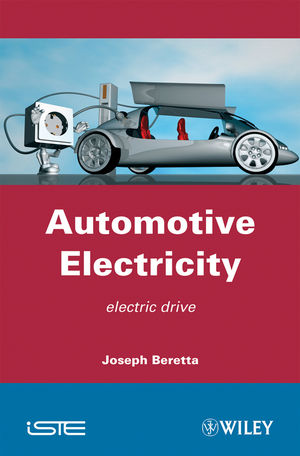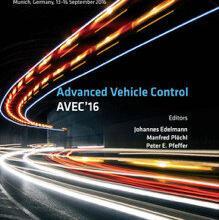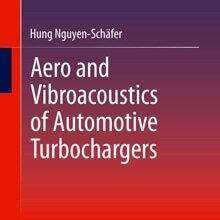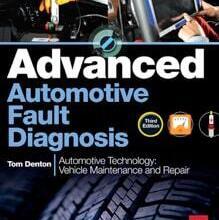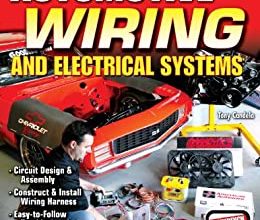| Book Format | |
| Book Language | English |
| Book Size | 12.4 MB |
| Number of Pages | 324 |
| ISBN | 978-1-118-61737-3 |
| Publisher | Wiley-ISTE, March 2013 |
| Price | $133 |
ABOUT THE AUTHOR
Joseph Beretta is currently with the Division of Research and Automobile Innovation at PSA Peugeot Citroën, where he is responsible for the domain of electromechanical research, electrochemistry, electronics and systems.
ABOUT THE BOOK
Automotive Electricity: Electric Drives
Since the beginning of the century, electrical engineering has invaded our daily life (light bulbs, electric robots, etc.). It is present in the majority of our everyday objects. Today it is strongly involved in the automotive market.
While the change in this field has been very slow over the last ten last years, it is now beginning to accelerate and we are witnessing a wave driven by regulatory constraints and market laws that are sweeping away the last bastions of resistance.
Even if the electric car has not experienced real success, automotive electricity and electronics now hold an important place. I dedicate this book to all of the pioneers who fought against the reservations and resistance of the system so that electrical engineering could find its place, to all those visionaries and dreamers with genius ideas, who still believe in the electric car and who are delighted by the progress of hybrid cars: for in a way, this book is also their work.
DOWNLOAD: Automotive Electricity: Electric Drive
Download for free or kindly support the author by purchasing the book from the publisher’s website.
TABLE OF CONTENTS
Preface ix
Chapter 1. Introduction 1
Joseph BERETTA
1.1. Automotive constraints 1
1.2. Key figures from the automotive industry – data from the CCFA (association of French car manufacturers) 2
Chapter 2. Basic Definitions 5
Joseph BERETTA
2.1. Basic concepts 5
2.1.1. Basics of automotive energy. 5
2.1.2. Basics of automotive dynamics 7
2.2. The different electric drive-train systems 10
2.2.1. Basic definitions 10
2.2.2. Definitions of drive-train systems 14
2.2.3. Thermal-electric hybrid systems 19
2.2.4. Complex hybrids 22
Chapter 3. Electric-Powered Vehicles 27
Joseph BERETTA, Cyriacus BLEIJS, François BADIN and Thierry ALLEAU
3.1. History 27
3.2. Battery-powered electric vehicles 31
3.2.1. Battery sizing 31
3.2.2. Vehicle specifications 33
3.2.3. Calculating the vehicle weights 34
3.2.4. Application on a small vehicle 37
3.3. Recharging systems for electric vehicles 40
3.3.1. What is battery charging? 41
3.3.2. The various types of chargers 41
3.3.3. Recharging efficiency 49
3.3.4. Recharging in complete safety 50
3.4. Thermal/electric hybrid vehicles 53
3.4.1. Assessment of traditional motorizations 53
3.4.2. Implementation of hybrid transmissions 69
3.4.3. Context of research concerning hybrid transmission 74
3.4.4. Functionalities of hybrid architectures 82
3.4.5. Evaluation of hybrid vehicles 110
3.4.6. The first vehicles on the market 118
3.5. Fuel-cell vehicles 144
3.5.1. History, introduction 144
3.5.2. Choosing the kind of fuel cell 145
3.6. Bibliography 169
3.7. Summary table of fuel-cell (PEM) vehicle prototypes (as of February 2005) 169
Chapter 4. The Components of Electric-Powered Vehicles 173
Joseph BERETTA, Jean BONAL and Thierry ALLEAU
4.1. Electric motors 175
4.2. Electronic converters 180
4.2.1. Characteristics of electric vehicles 180
4.2.2. Components of electronic converters 181
4.3.3. Generators – receivers – sources 182
4.3.4. Rectifiers 185
4.3.5. Choppers 186
4.3.6. Inverters 202
4.3. Batteries and static storage systems 207
4.3.1. The different electrochemical couples for batteries 207
4.3.2. Positioning of Ni-MH and Li-ion batteries for different applications 213
4.3.3. Recycling processes 215
4.4. The fuel cell and on-board fuel storage 217
4.4.1. History of the fuel cell 217
4.4.2. The different fuel-cell technologies 220
4.4.3. The PEM fuel cell 223
4.4.4. Technology and cost of fuel-cell components 235
4.4.5. Peripherals of the fuel cell 241
4.4.6. Numerical modeling of the fuel cell 246
4.4.7. The fuel and its storage 249
4.4.8. Conclusions. 264
4.5. Bibliography 266
Chapter 5. Prospects and Evolutions of Electric-Powered Vehicles: What Technologies by 2015? 269
Joseph BERETTA
5.1. Mobility 269
5.2. New technologies 274
5.2.1. Electric motors 276
5.2.2. Electronic power systems 278
5.2.3. Electric energy sources 279
5.3. New cars 282
Automobile Glossary 291
Appendices 313
Appendix 1. European regulation emissions for light vehicles 313
Appendix 2.a. Example of hybrid parallel transmission with flywheel storage 314
Appendix 2.b. Example of hybrid parallel transmission with oleo-pneumatic storage 314
Appendix 3. Example of function allocation 315
Appendix 4. Toyota Prius engine 316
List of authors 317
Index 319


